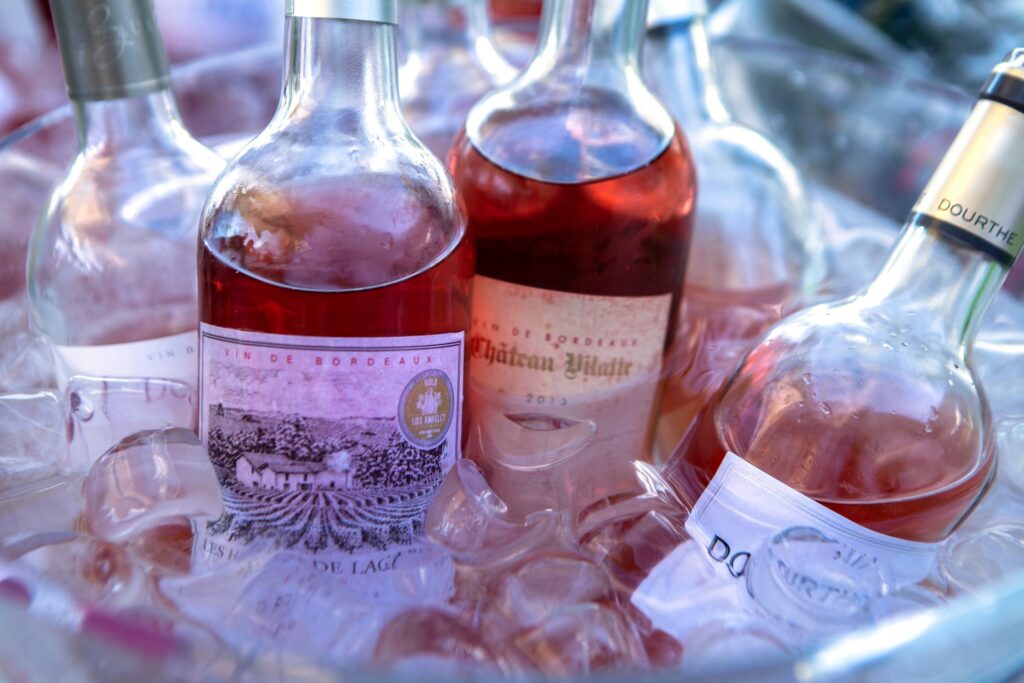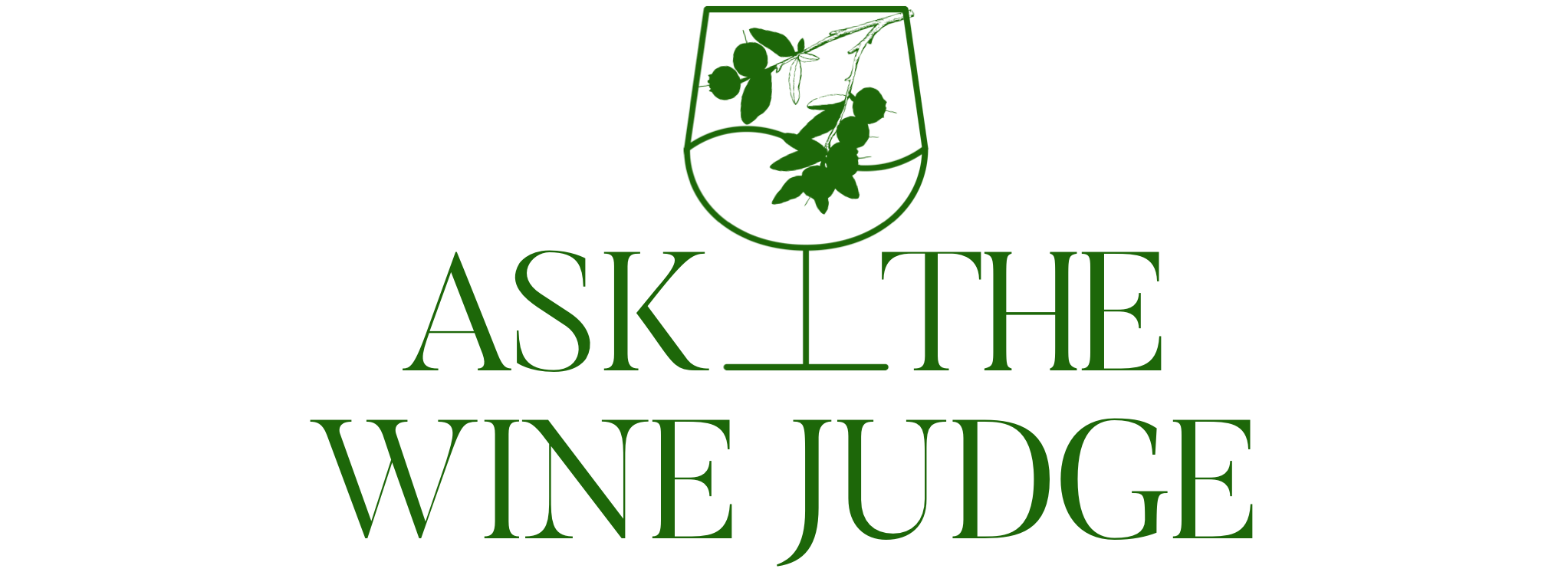Table of Contents
Ever wondered why swirling your glass is as much a part of wine tasting as sipping the wine itself? It’s not just for show; there’s real science and art behind this elegant motion. When you swirl your wine, the liquid coats the sides of the glass, allowing more wine surface area exposed to oxygen. This interaction releases the wine’s aromas, making smelling your wine a more intense and enjoyable experience. Have you noticed how the aromas of a Sauvignon Blanc or a Cabernet Sauvignon change after you’ve given the glass a good swirl?
Swirling wine is particularly important for award-winning wines from regions like Napa Valley, where the winemaking process aims to produce complex flavor profiles. By swirling your glass, you’re also helping to evaporate alcohol, which can suppress other, more desirable scents. As the alcohol dissipates, you might detect subtle notes that were previously hidden. Next time you’re drinking wine, give it a swirl and see how the flavors unfold. Are you ready to explore the other reasons why we swirl wine?
The Purpose Behind the Swirl
When you gently swirl your wine in the glass, the motion creates a whirlpool effect that causes the wine to travel up and down the sides of the glass. This isn’t just a whimsical trick; it serves a specific purpose. Unlike still wines, sparkling wines have carbonation that provides natural agitation, so they don’t benefit from swirling. In fact, swirling can dissipate the effervescence that makes sparkling wines special. So next time you’re sipping a sparkling wine, enjoy the bubbles and skip the swirl.
Enhancing the Aroma and Flavor Profile
Take a moment before you taste your wine and swirl your glass gently. Do you notice how the aroma changes? This simple action helps to release the wine’s bouquet, enhancing the overall tasting experience. As the wine coats the sides of the glass and is exposed to oxygen, it opens up, allowing you to detect a wider range of smells and tastes. From the citrusy zest in a personalized wine to the earthy undertones in a mature red, swirling can make a difference in perceiving these nuances.
Moreover, swirling can reveal the presence of undesirable compounds. Have you ever caught a whiff of something off-putting after swirling your glass? That’s the wine telling you about its condition. Through swirling, you can also gauge the wine’s viscosity – which can hint at higher tannins or sugar content. Have you ever compared the legs of a sweet wine with those of a dry wine after swirling?
Assessing Wine Quality Through “Legs” and “Tears”
After swirling wine in the glass, take a moment to observe the wine tears or wine legs as they slide back down the sides of the glass. These trails can provide clues about the wine’s content and quality. Thicker, slower-moving legs may indicate a wine higher in alcohol or sugar content.
But remember, while legs can be intriguing, they don’t tell the whole story. The winemaking process, including factors like fermentation and aging, also plays a crucial role in the wine’s final profile. So, while wine legs offer hints, they are just one piece of the puzzle. Next time you’re at a wine tasting, swirl your glass and see what the legs reveal.
Aerating the Wine for a Better Tasting Experience
Did you know that when you aerate your wine, you’re helping it to breathe, much like a runner taking in deep breaths? This is especially true for varietals like Cabernet Franc, Grenache Blanc, and Petite Sirah. These wines often have complex structures that benefit from contact with air. Swirling in wine glasses enhances this contact and can soften the wine, integrating the flavors for a smoother taste. Have you ever compared the taste of a wine before and after aerating it?
While aerating, the oxygen helps to release volatile compounds that contribute to the wine’s aroma and taste. This can be particularly noticeable in younger, more tannic wines that might seem harsh at first. After swirling, the tannins can mellow out, revealing a more approachable and enjoyable drink. Next time you pour a glass of wine, try letting it sit after swirling. Can you taste the difference as it aerates?

Mastering the Technique of Wine Swirling
Mastering the swirl is a key skill for any wine enthusiast. Swirling isn’t just a flourish; it’s a technique that enhances the wine-tasting experience. But don’t worry about the wine in your glass; it’s more about finesse than force. Even a Pinot Noir, known for its delicate profile, can benefit from a well-executed swirl. Are you ready to perfect your technique and swirl like a pro?
The Correct Way To Swirl Your Wine
Beginners often wonder about the correct way to swirl your wine. The initial swirl might seem daunting, but it’s simpler than it looks. Start by placing your glass on the table; this provides stability. Then, gently grasp the base or pinch the stem and move the glass in small, steady circles. This will create a gentle whirlpool inside the glass, coating the sides without spilling. Have you ever tried swirling with the glass on the table, or do you prefer to lift it into the air?
Do: Pour the Right Amount
When you’re eager to taste a valley wine, it might be tempting to pour yourself a generous glass. However, to swirl effectively and appreciate the wine fully, it’s important not to overfill your glass. The ideal amount is about one-third full. This provides enough space for the wine to move freely and for the aromas to gather without the risk of spilling. Have you ever poured too much and found it difficult to swirl without creating a mess?
With the right amount of wine, you can observe the color, sniff the evolving aromas, and swirl with ease. This is especially helpful when tasting wines that are susceptible to oxidation. A properly poured glass allows you to enjoy multiple swirls, which is particularly beneficial when trying to unlock the layers of a complex valley wine. How does pouring the right amount change your tasting experience?
Don’t: Overfill Your Glass
Overfilling your glass can lead to a less enjoyable wine experience. Not only does it make swirling your wine difficult, but it also risks spilling and wasting a good valley wine. Remember, swirling is about gently aerating the wine, not creating a whirlwind in your glass. Have you ever overfilled your glass and then struggled to swirl without sloshing the wine over the edges?
By pouring the appropriate amount, you give yourself the chance to fully engage with the wine. The space above the wine in the glass acts as a bowl that traps the aromas, allowing for a more intense olfactory experience. Next time you pour a glass, resist the urge to overfill. See how it enhances your ability to swirl and savor the wine’s bouquet. Can you notice the difference when you give the wine enough room to breathe?
The Ideal Surface for Swirling Wine
Choosing the right surface to swirl the wine in your glass can make all the difference. A flat, stable surface is best, allowing for controlled movement and minimizing the risk of accidents. Even when swirling a delicate Pinot Noir, a steady hand on a firm surface can enhance the aeration process without sacrificing the wine’s integrity. Have you found your ideal surface for swirling yet?
Do: Use a Stable Surface When Starting Out
If you’re new to wine swirling, start by using a stable surface to practice your technique. By pinching the stem of the glass and moving it in gentle circles on the table, you’ll find that you have more control over the motion. This method ensures the wine is properly aerated and the aromas are released, without the fear of tipping the glass over. Have you tried this method, or do you have another technique for swirling?
With a stable surface, you can focus on the wine itself, observing how it moves and changes as it’s exposed to air. This can be particularly useful when you’re still learning about the different aspects of wine tasting. As you become more comfortable, you can experiment with lifting the glass off the table while swirling. How does your confidence grow as you practice on a stable surface?
Don’t: Place Your Glass on a Sticky Table
One thing to avoid is placing your glass on a sticky table when swirling. The residue can hinder the smooth motion of your swirl, affecting the aeration process and potentially causing spills or accidents. By pinching the stem of your glass, you ensure a smooth rotation and a better swirling experience. Have you ever had a swirling mishap due to a sticky surface?
It’s important to find a clean, dry area where you can swirl your wine without obstruction. This ensures that every motion contributes to opening up the wine’s aroma and flavor profile. The next time you’re at a wine tasting or enjoying a glass at home, take a moment to ensure your surface is swirl-friendly. How much does a clean surface improve your swirling technique?
Wine Types That Benefit from Swirling
While most wines benefit from a good swirl, some truly shine with this technique. Full-bodied reds, oaky whites, and aged wines often have layered aromas and flavors that become more pronounced when aerated. On the other hand, light and fresh wines might only need a gentle swirl to reveal their delicate bouquets. Have you noticed how different wines respond to swirling?
Do: Swirl the Right Type of Wine
When it comes to swirling, choose the right type of wine. Robust reds with complex bouquets, like a Cabernet Sauvignon, often have hidden notes that emerge beautifully with a swirl. Similarly, aromatic whites such as Chardonnay can reveal a spectrum of scents from floral to fruity when properly aerated. Have you experienced the transformation of a wine’s aroma after swirling?
Even for experienced wine lovers, the effect of swirling can be surprising. Some wines that seem closed off can evolve into a more expressive state, letting you enjoy every subtle nuance. When you’re at your next wine club meeting or personal tasting, try swirling the wine and observe how it changes with each rotation. What hidden notes have you discovered through swirling?
Don’t: Swirl Sparkling Wine
While swirling is beneficial for many wines, sparkling wines are an exception. The effervescence and delicate aromas of wines like Champagne or Prosecco are best preserved without swirling. The bubbles in sparkling wines naturally release their bouquet and swirling can cause the bubbles to dissipate too quickly, flattening the wine’s vibrant character. Have you ever accidentally swirled a sparkling wine and noticed the difference?
So the next time you’re enjoying a glass of bubbly, resist the urge to swirl and instead enjoy the lively dance of the bubbles as they carry the wine’s aroma to your nose. This approach allows you to appreciate the unique qualities that sparkling wines have to offer. When do you prefer to enjoy sparkling wines, and how do you ensure their effervescence is maintained?
The Visual Appeal of Swirling Wine
Have you ever noticed the beauty of wine as it swirls in a glass? This simple action isn’t just for show—it’s a feast for the eyes that hints at the complex experience awaiting your palate.
Observing Color and Clarity
As a professional wine enthusiast, you know the importance of the appearance of wine. But what about the casual wine drinker? Well, swirling wine isn’t just for pros. It’s a great way for anyone to get a better look at the wine’s color and clarity. Swirling gently in the glass, the wine reveals its true hues, from the deep ruby of a young red to the golden amber of an aged white. So why not give it a try? Can you see the subtle shades and nuances that tell the story of the wine’s journey from grape to glass?
Looking beyond the color, clarity is another visual clue to the wine’s quality. A clear, bright appearance can indicate a clean, well-made wine, while a hazy or cloudy wine might raise questions about its condition. But remember, some wines are meant to be cloudy, especially those that are unfiltered or have natural sediments. So, what does your glass reveal?
Watching the Wine Dance in the Glass
Have you ever been entranced by how Pinot Noir moves in a glass? It’s like watching a ballet, where each swirl causes the wine to rise and fall gracefully along the glass’s sides. This mesmerizing movement is more than just eye-catching; it’s a part of the wine’s expression, revealing its body and texture. Do you find yourself captivated by the wine’s performance as much as I do?
When Pinot Noir swirls, it unfolds its story, offering a glimpse into its character. The way it coats the glass, the speed at which it settles—every detail contributes to your anticipation of that first sip. So next time you pour a glass, take a moment to appreciate the dance before diving into the taste. Isn’t it remarkable how something so simple can add so much to the experience?

Practical Tips for Wine-Swirling Enthusiasts
Ready to master the art of swirling? Start by pouring the right amount of wine—just enough to cover the bottom of the glass. This allows ample room for movement without the risk of spilling. When you swirl the wine, you’re exposing it to air, which helps release its aromas. Observing the wine’s color becomes part of the ritual, further enhancing your enjoyment. And isn’t it satisfying to see how the wine’s legs form as you tilt the glass back into place?
Practice Swirling at Home With Water
Before showing off your swirling skills with a fine Pinot Noir, why not practice at home with water? It’s a mess-free way to perfect your technique. Start by holding the base of your glass off the table and securing it with your thumb and forefinger. Then, with a gentle flick of the wrist, set the liquid in motion. Can you feel the rhythm as the water whirls around the glass without spilling?
Once you’ve got the hang of it, try swirling the glass while it remains on the table. Use your fingers to draw small circles on the table’s surface, keeping the base of the glass in contact. This method is great for beginners and can help avoid accidents. So, do you think you’re ready to transition from water to wine?
Don’t Take It Too Seriously
Remember, wine swirling is part of the fun of wine tasting. If you’re new to this, don’t fret if your swirl isn’t perfect. The goal is to enjoy the wine, not to perform a flawless swirl every time. Have you ever laughed at yourself when you made a little splash? It’s all part of the learning process. So keep it light-hearted, and enjoy the journey of becoming a wine-swirling enthusiast.
Even if a rogue wave of wine escapes the glass, it’s not the end of the world. Each spill is a story, a memory of your wine-tasting adventures. So why not invite some friends over and make a night of it? Practice together, share your spills and thrills, and toast to the joy of wine. Are you ready to swirl with a smile?
Using Break-Resistant Wine Glasses
When learning to swirl, consider using break-resistant wine glasses. They offer peace of mind, allowing you to focus on your technique rather than worrying about accidents. Have you ever had a close call with a cherished glass? These sturdy alternatives can take the pressure off, making your swirling practice a stress-free experience. Plus, they’re perfect for outdoor tastings where the ground isn’t always as forgiving as your dining room table.
The Final Whirl
Have you ever watched with a hint of envy as someone expertly swirls a glass of wine, releasing its hidden symphony of scents and flavors? Swirling wine isn’t just for show; it’s a crucial part of the tasting process, enhancing your experience by integrating oxygen into the wine. But how can you do it without feeling self-conscious? Just remember, it’s all about comfort and confidence. Start by holding your glass by the base or stem, and gently rotate the glass in small circles on a table or in the air. As you do, you’ll notice the wine’s texture and viscosity—a dance that hints at the quality and character of your drink. With a bit of practice, swirling will become second nature to you, turning your next sip into an even more delightful journey. Ready to give it a try?

Sed non elit aliquam, tempor nisl vitae, euismod quam. Nulla et lacus lectus. Nunc sed tincidunt arcu. Nam maximus luctus nunc, in ullamcorper turpis luctus ac. Morbi a leo ut metus mollis facilisis. Integer feugiat dictum dolor id egestas. Interdum et malesuada fames ac ante ipsum primis in faucibus.





Wow, wonderful blog layout! How long have you been blogging for? you make blogging look easy. The overall look of your site is wonderful, let alone the content!